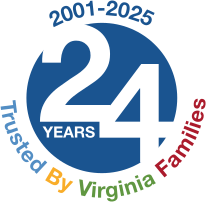Village to Village Network
The Village to Village Network – a national organization that supports and advocates for the Village Movement that empowers older adults to age in community – was formed in 2009 to provide expert guidance, resources, and support to help communities establish and maintain thriving Villages. It acts as a “Village common” for Villages in development as well as older, more established Villages. The Village Movement started in a neighborhood in Boston in 2002 and today there are over 264 open Villages and more than 55 in development in 43 states, District of Columbia, and four countries. Village to Village Network and the Village Movement not only impact Villages and their members but also the lives of countless families, caregivers, and members of the broader communities where Villages are located.
What is a Village?
Villages should not be confused with bricks-and-mortar residential communities. Rather, they are grassroots, membership-driven nonprofit organizations that connect older adults to their communities, social engagement, and the resources they need to continue living life on their own terms in the places they call home. Villages coordinate access to affordable services, and provide volunteer services including transportation, inspiring health and wellness programs, home repairs, tech support, and social and educational activities. Many Villages offer access to vetted and discounted service providers. Villages positively impact isolation, interdependence, health, and purpose of their individual members, reducing the overall cost of care compared with the cost of living in a residential institution.
Villages are a cost-effective, home-based care model for our aging society, each one reflecting the needs of older adults in the community in which it operates. Villages are increasingly serving older adults in under-resourced communities and diverse populations, and most Villages subsidize membership fees for older adults with demonstrated need.
Why the Village Movement now?
Countless studies show that older adults want to remain in their homes as they age. But remaining in their homes can be daunting for many, posing safety risks and logistical challenges. The majority of older Americans do not qualify for publicly funded programs and can’t readily afford the high costs of long-term care and institutional housing. Villages are filling the gap between what older adults need and what they can afford to age in place. Communities are stronger with a Village!
Across Virginia there are currently 14 Villages in operation and two in development. Click here to see if there is a village in your community! Where there are concentrations of Villages in a geographic area, regional coalitions of Villages have been established. Examples include Washington Area Villages Exchange, Capital Region Villages Collaborative (NY), Greater Columbus Network of Villages, UPLIFT Florida Network, Village Movement California, Massachusetts Villages, and Bay Regional Area Village Organization (BRAVO). These organizations facilitate the exchange of information, ideas, and resources among member Villages, and they advocate for Villages and the Village Movement at the state and local levels.
The Village Model
Villages tend to be organized using several business models. There is an expression in our network, “If you have seen one village, you have seen one village” since no two Villages are the same. Models include those with paid staff, all volunteer Villages, parent organization-sponsored Villages, and those organized as a hub-and-spoke. While each Village is unique and some are intergenerational, they share a primary common focus on older adults.
Collaborations and partnerships enable Villages to leverage their resources and better serve older adults. Villages partner with health care agencies and providers, educational institutions, service clubs, for-profit businesses, faith-based groups, and organizations in the aging services network.
Village Research
Villages have been the subject of a number of research studies. In 2012, the Rutgers School of Social Work conducted a National Overview of Villages, which identified organizational characteristics of the Villages in operation at that time. The 2016 National Survey of US Villages, conducted by the University of California at Berkeley and Mather Lifeways, also explored organizational characteristics in addition to policies, governance, funding, and sustainability. Since those initial studies, the Village Movement has continued to grow and develop.
More recently, in 2022, the Village to Village Network conducted a landmark study of Villages and the nation’s Area Agencies on Aging. The research demonstrated the multiple ways in which the two types of organizations are collaborating to provide older adults with increased access to support services and more opportunities for social and educational engagement. Villages and AAAs collaborate on Village formation and start-up, programming, capacity building, and planning. The study, available here, provides case study examples of collaborations, including how the relationships are managed and key lessons learned.
Also in 2022, Network leaders conducted a Hub and Spokes: A National Survey. With case studies of seven hub-and-spoke Villages, the study uncovered the variability among these organizations as well as the salient features they share. Critical aspects of this model include greater grant writing ability, efficiency of staff time, cost reduction, and leadership sustainability. Challenges include the cost for villages with very limited budgets and the need for baseline conformity of operations.
Conclusion
Villages are staking a claim in the aging services network as well as in-home and community-based care. The network is ready for the next level of collaboration with health care providers, aging services agencies, faith communities, and local, state, and federal governments. Most Villages started out as grassroots organizations, led by neighbors with a vision for a better way to age. As the Movement advances, we are discovering the need for long-term strategic planning, operational support, marketing strategies, expanded revenue sources, and impact data to show how Villages contribute to successful and thriving aging, locally, statewide, and nationally. As Village Movement California claims, “In an age of self-organizing networks, Villages are a revolutionary idea whose time has come.”
Author --- Barbara Sullivan, Village to Village Network
